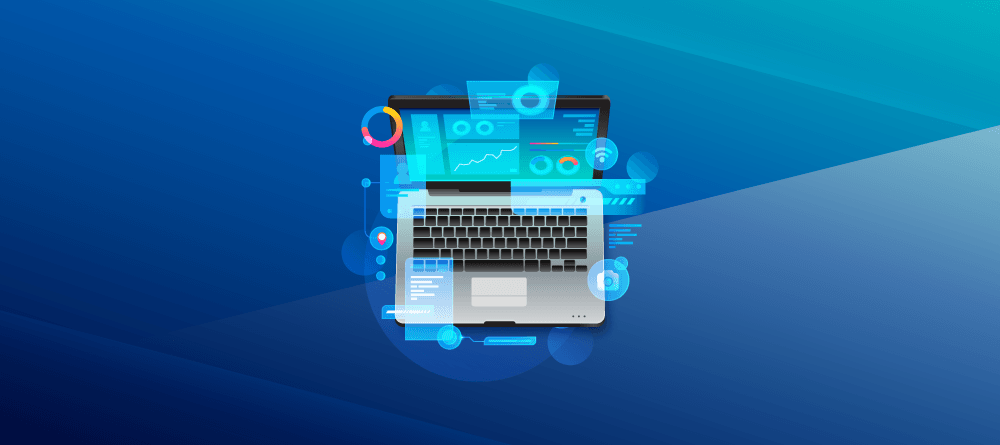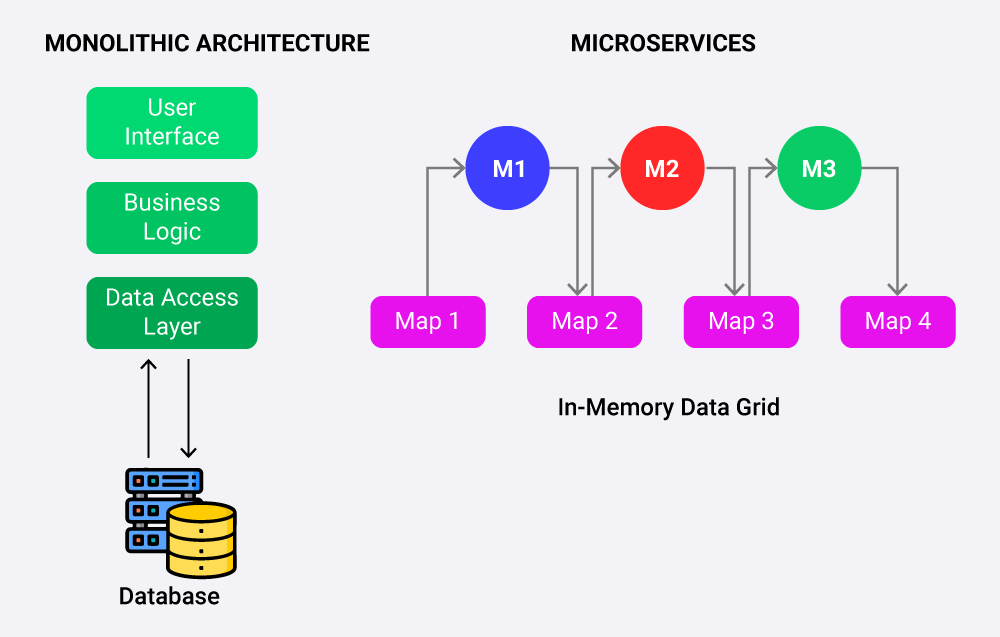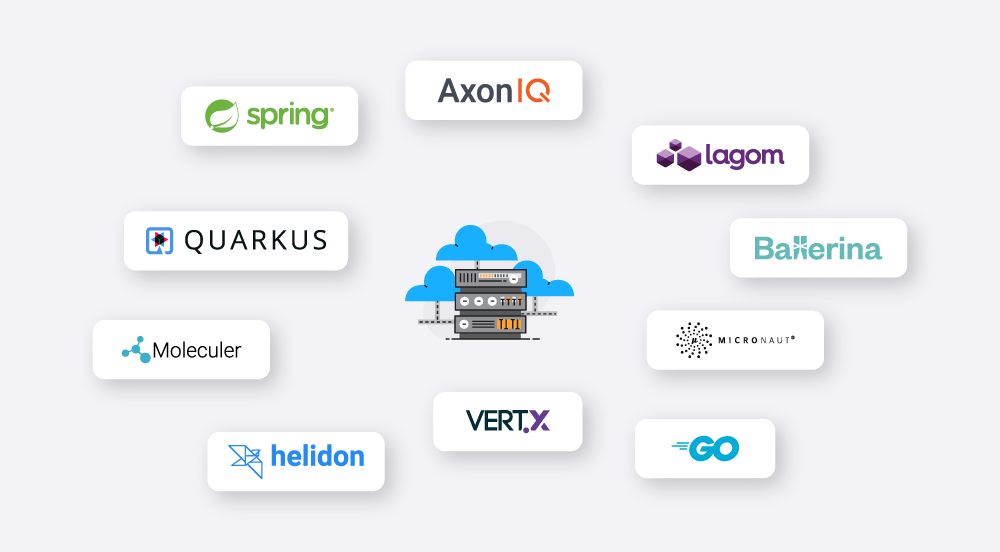
Subscribe to our Blog
We're committed to your privacy. SayOne uses the information you provide to us to contact you about our relevant content, products, and services. check out our privacy policy.

Ranju R February 16, 202213 min read

Generating table of contents...
For the newbies who are reading this blog, microservices is the result of a development methodology in which a single big application is divided into smaller services each performing a specific function. Microservices are becoming very popular and 61% of respondents in an O’Reilly survey admitted that their organizations have been using microservices for more than a year and 28% have used microservices for about three years now lends credence to the fact.
Each of these services is independently deployed, they need minimum management, leverage distinctive data storage technologies, and support different programming languages. Needless to say, microservices are becoming a favorite with those organizations that are trying to gain more control while using large and complex monolithic applications.
 Given below are some of the favorite frameworks that developers like to use while building microservices.
Given below are some of the favorite frameworks that developers like to use while building microservices.
This is a popular Java framework used for microservices development. With extensions such as Spring Cloud, developers can easily build full-stack microservices. The Spring Boot + Spring Cloud combination is a popular one and supports a large development community. Therefore, plenty of help is at hand for the developers.
Spring Cloud supports many out-of-the-box facilities such as services discovery and load balancing which are invaluable for developers. A large number of collaborating components that are available in Spring Boot make it easy for building both small- and large-scale systems. The best part is that the developer can start with a simple architecture. The Inversion of Control property also allows developers to integrate Spring Boot easily with other frameworks.
Spring uses different modules that help to easily integrate with popular databases. Spring JPA, Spring JDBC, Spring Apache Cassandra and Spring MongoDB are a few extensions.
When integrated with Resilience4J, Spring Boot provides many functionalities such as Circuit breakers, Timeout, Retry, Rate Limiters, Bulkheads, fallback handlers, etc. that can help to handle failures in distributed systems.
The Spring Boot Actuator facility provides features such as health check, Metrix, and view logs.
Download our ebook “Choose the best microservices vendor and trim the costs”.
Spring has the capabilities to build reactive apps. Whilst it is easy to build rest API using Spring MVC, easy integration with MQ enables building asynchronous style services. Spring has modules that also allow it to build SOAP-based applications.
Using various modules, Spring provides abstractions that can be integrated with any AMQP, Apache Kafka, ActiveMQ, or RabbitMQ.
Spring Boot allows integration with powerful tools such as Prometheus, Consul, Grafana, and Jaeger.
It is easy to deploy on DevOps, Docker, Kubernetes, Etcd, and OpenTracing.
Spring Security offers good options such as support for OAuth2, the possibility to build stateful and stateless services, session management, key vault, and gateway patterns.
Other features:
For Python developers, Django is a high-level web framework that facilitates the quick creation of safe and enduring websites. It adheres to the "batteries-included" principle, meaning that many frequently used web development activities are already covered by modules and other libraries. This includes features like automatic admin interfaces in Django, built-in security measures to thwart common web attacks, and ORM (Object-Relational Mapping) for database interactions.
The DRF (Django REST Framework) extension for Django is designed to facilitate the creation of RESTful web APIs. It also provides sterilizers for converting complex data types, such as Django models, into formats that are simply rendered, like JSON.
Rapid Development: Django and DRF are optimized for speed, allowing you to quickly build functional applications or APIs in a short amount of time.
Strong Community Support: Both frameworks boast robust community support and offer comprehensive, user-friendly documentation.
Dynamic Admin Interface: Django comes with a built-in admin interface that is ready to use without additional coding, which is particularly advantageous for developers needing to set up administrative functions quickly.
Extensive Plugin and Package Availability: Django provides a wide range of plugins and packages for nearly every need, enhancing its functionality and ease of use.
Another full-stack Kubernetes-native Java framework is Quarkus, which optimises Java particularly for containers and makes it a powerful platform for serverless, cloud, and Kubernetes environments. Quarkus is created for Java virtual machines (JVMs) and native compilation.
Redhat is supporting Quarkus, which is swiftly gaining momentum for building scalable, high-performance Java applications. Applications built on the Quarkus platform are known for their quick startup times.
If you want to study Quarkus in 2025, I highly recommend that you check out this Starting with Quarkus course by Antonio Goncalves, one of the Quarkus pioneers on Udemy. Many Java programmers are interested in trying Quarkus for fast and reactive Microservices.
At SayOne Technologies, we have been helping enterprises to modernize their IT legacy systems with secure, independent, and agile full-stack microservices applications that we build using Java Spring Boot together with Spring Cloud extension.
We build projects having simple systems that enable quick repairs and produce updates and upgrades with minimum or no downtime. We build applications by leveraging agile and DevOps methodologies. We provide active support and maintenance services that enhance the quality of our microservices applications development services.
This is yet another popular Microservices services framework used by developers. This framework supports multiple languages and if any organization has Java and Kotlin, this framework could be their ideal choice for javascript developers. Vert. X is a toolkit for building reactive microservices that runs on the JVM.
Eclipse Vert.x is event-driven and allows the app to handle concurrency with just a small number of kernel threads. Vert.x also allows scaling with minimal hardware. The other cool features that this framework provides include is that it is lightweight with the core being 650kB in size and it is very fast.
Read our blog “Event-Driven Architecture - Fundamental for Digital Transformation”.
Vert.x is not an application server but is modular and simple. You can, however, create lightweight yet powerful and high-performance microservices using Vert.X.
Vert.x offers various components/Libraries to build Microservice applications such as Vert.x Service Discovery, Vert.x Circuit Breaker, Vert.x Config supports clustering and scalability, facilitates observability with Vert.x Health Checks component facilitates testing, offers gRPC Support with Vert.x gRPC module. Service Proxies allow isolation of functionalities and exposure on the event bus for consumption by other services. Vert.x is a polyglot and encourages DevOps methodology, which is a huge advantage.
Helidon microservices framework is developed by Oracle. Helidon, a collection of Java libraries for writing microservices, there are two variants, Helidon MP and Helidon SE. Helidon is quite new and there is extensive documentation that is available. Spring Boot outperforms because of the many features it possesses.
Helidon MP, an implementation of the MicroProfile specification, it is a good choice for Java EE developers. Helidon SE is a compact toolkit embracing the latest Java SE features: asynchronous and functional programming, reactive streams, and fluent-style APIs. Helidon SE supports GraalVM native images that result in a small footprint and very fast startup. The REST framework is Helidon WebServer for Helidon.
Other Helidon MP features to build Microservices applications:
Start your microservices journey today! Give us a call!
It is a pluggable RPC-based library that provides some of the fundamental building blocks to code microservices in Go. It implements service discovery functions using the following: consul, communication via HTTP, and encoding using proto-rpc or json-rpc and Pub/Sub.
Read our blog : Infusing Retail Edge Architecture with Microservices-Benefits
Go Micro addresses the main requirements that are required for building scalable systems. This library turns the microservice architecture pattern into a set of tools that act as the platform’s building blocks. Micro provides simple abstractions for complex distributed systems that are understood by developers.
Micro is a pluggable toolkit that addresses these issues such as constantly evolving technology and changing infrastructure stack.
Some of the runtime features are:
The Molecular NodeJS microservices framework works best for a JavaScript developer. Molecular is a powerful, fast and modern framework that helps you build reliable, efficient, and scalable services.
Some main features:
This is a new framework that is well suited for Kubernetes. This is a container-first, cloud-native framework by Red Hat for writing Java microservices. It is tailored for HotSpot and GraalVM crafted from the best Java libraries/standards. The goal with which Quarkus was made was to facilitate Java to become the leading platform in serverless and Kubernetes environments. Also, it offers developers a unified imperative and reactive programming model to address a wider range of distributed application architectures optimally.
Micronaut is a full-stack microservices framework that is Java-based and designed for building modular and easily testable microservices. Developed by the Grails framework creators, it has been made specifically for building real-world applications using Spring, Spring Boot, and Grails. Micronaut comes with many tools required for building full-featured microservices applications. Other features include:
Read our blog : What Kind of Challenges Can Microservices Help You Overcome
Simultaneously, Micronaut aims to avoid the disadvantages posed by frameworks like Spring Boot, Spring, and Grails by offering:
Lagom is an open-source framework that facilitates building Reactive microservices systems using Java or Scala. Lagom builds on Akka and Play technologies which are used in the production of many demanding and modern applications.
Read our blog : How to Hire Microservices Developers from Other Countries
Lagom has an integrated development environment that allows the builder to focus on solving business problems. The builder can use just a single command to build a project, to then start supporting components and microservices, and also the Lagom infrastructure. The environment also has a hot-reload feature to observe changes to the code.
Services created with Lagom define better development responsibilities that increase agility, allow more frequent releases, thus reducing time to market, and enable the creation of systems having reactive qualities such as resilience, responsiveness, scalability, and elasticity that meet demanding user expectations and also make the best use of modern computing environments.
Axon allows development Java applications from a monolith without significant refactoring into event-driven microservices.
Axon supports a programming model as well as advanced infrastructure to provide support for enterprise-ready operations for the programming model such as for scaling and distribution of mission-critical business applications. The Axon Framework and Axon Server (the infrastructure part of Axon) are both open-sourced.
Axon Framework, a Java microservices framework, helps you build microservices architecture using Domain-Driven Design (DDD) principles. It also allows you to implement microservices patterns such as CQRS and event-driven architecture models.
Read our blog : Order Management and Fulfillment Using Microservices
Axon meets the most demanding enterprise requirements such as efficient scaling of event storage, clustering, security, load-balancing, globally distributed data centers, metrics, service discovery, third-party integration, and monitoring.
Overview
A cross-platform, high-performance framework called ASP.NET Core is used to create contemporary, cloud-based, Internet-connected apps. In the.NET ecosystem, it is a good option for developing microservices.
Principal Elements
Ideal Use Cases
Ballerina is a distributed programming language that allows writing distributed applications. You can write decoupled services from the ground up. It is also easy to write network applications using Ballerina. As Ballerina is an open-source programming language, it is easy for programmers to write software that just works.
Overall, Ballerina allows a structured system that allows for a loose coupling when compared to traditional languages.
Looking for the best microservices vendor? Give us a call today!

We're committed to your privacy. SayOne uses the information you provide to us to contact you about our relevant content, products, and services. check out our privacy policy.

About Author
Helping businesses scale-up their development teams ( Python, JavaScript, DevOps & Microservices)

We collaborate with visionary leaders on projects that focus on quality